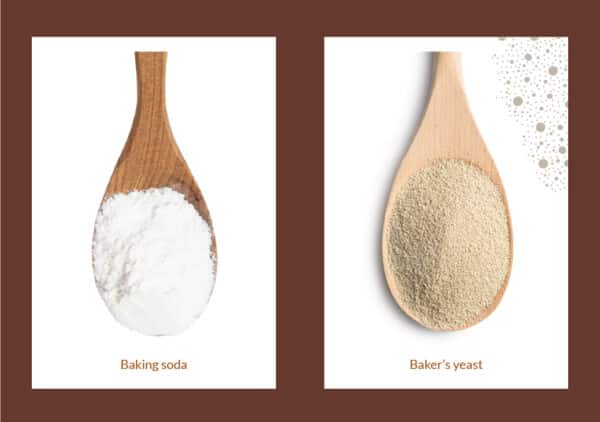Biofuels and yeast: the basics
So, how does yeast fermentation result in something that can power cars, airplanes, and even maybe someday whole cities?
Yeast is capable of transforming plant sugars into fuel. The magic works during the anaerobic process (in the absence of air) of fermentation. Under the action of yeast enzymes, sugars (in particular glucose) contained in cellulose or starch are transformed into ethanol.
Figure 1. The Process of Bio-Ethanol Production
Today there are roughly three broad categories of biofuels:
- First-generation biofuels: made from traditional feedstocks such as cereal grains, sugar cane, and sugar beets.
- Second-generation biofuels: made from non-food crops, such as cellulosic biofuels and waste biomass (stalks of wheat and corn, and wood).
- Third-generation biofuels: use specially engineered crops such as algae as the energy source. These algae are grown and harvested to extract the oil within them. This oil can then be transformed into biodiesel or refined into other fuels.
Three types of biofuels
Within the category of biofuels, we can further subdivide these sustainable fuels into three categories based on their main uses:
- Biodiesel: which is a vegetable oil or animal fat-based fuel consisting of long-chain fatty acid esters. Biodiesel is used in engines that burn diesel fuel such as diesel cars, large trucks, and tractors.
- Bioethanol: is made through fermentation, mostly from carbohydrates produced in plants as sugar or starch. It is used in engines that burn gasoline, such as most cars.
- Bio jet fuel: can be made from vegetable oils, sugars, animal fats, and even waste biomass. This type of fuel is used in airplanes and other aviation engines without modification.
Biofuels, bioethanol, biodiesel, and bio jet fuel can play major roles in reducing the transportation sector’s carbon footprint and decreasing our dependency on fossil fuels. Over the years, these industries have extended across the globe. Recently blending mandates and policies of ethanol in petrol have been more common as governments try to stretch the natural resources they have.
Innovations in the bioeconomy through yeast!
Smart use of biomass and fermentation through yeast can also lead to new products or to improved versions of traditional petroleum-based products that have the potential for better performance, lower toxicity, or new functions. Bio-sourced yeast innovations reduce our dependence on petroleum and reduce petroleum-based greenhouse gases.
Let’s explore a few of these innovations!
Cellulosic ethanol
Advanced biofuels, such as cellulosic ethanol, have been identified worldwide as a key component in the decarbonization of the transportation sector as mentioned before. Second-generation biofuels have the advantage of being able to be produced from an even wider range of feedstocks available in abundance in numerous countries. These new advanced biofuels can capture additional value from agricultural or forestry by-products such as corn stover, wheat straw, wood, bagasse, etc.
Biopolymers and performance biomaterials
Sustainable bio-sourced monomers, polymers, and performance materials including resins, chemicals, solvents, bioplastics, and biocomposites will help to eliminate plastics, which will facilitate less pollution and greater sustainability for the environment.
Construction
Microorganisms and biomaterials for a sustainable building industry include concrete, cement, bricks, insulation, and timber.
Textiles
Innovative enzymatic processes or bio-based fibers, silks, and dyes can be used to produce sustainable fabrics which can be utilized in the clothing, fashion, upholstery, or medical industries.
Pulp and paper
The pulp and paper sector produces a lot of excess residues. These leftovers, which are rich in sugars, carbohydrates, and other nutrients, can be used as an appropriate feedstock for second-generation bioethanol production, according to the circular economy model. This can allow fewer trees to be cut down and the resources we do use can be used more efficiently.
Household and surfactants
Biodegradable and low-toxicity bio-based surfactants like industrial and household detergents, softeners, and dishwashing products can be made through fermentation to make sure our homes stay clean without any toxic side effects on the environment.
A more sustainable tomorrow through yeast!
Renewable production of energy and fuels such as bioethanol, biodiesel, sustainable aviation fuels, and biogas are all possible through using yeast and fermentation!
Fermentation is one of the key enabling technologies to sustain a new bio-based and sustainable economy not only in fuel but across industries as you have seen from bioplastics to textiles and construction material. All of these products will be more sustainable and easier to biodegrade, cause less impact on the environment and produce fewer greenhouse gases and therefore ensure a better tomorrow for all of us!




